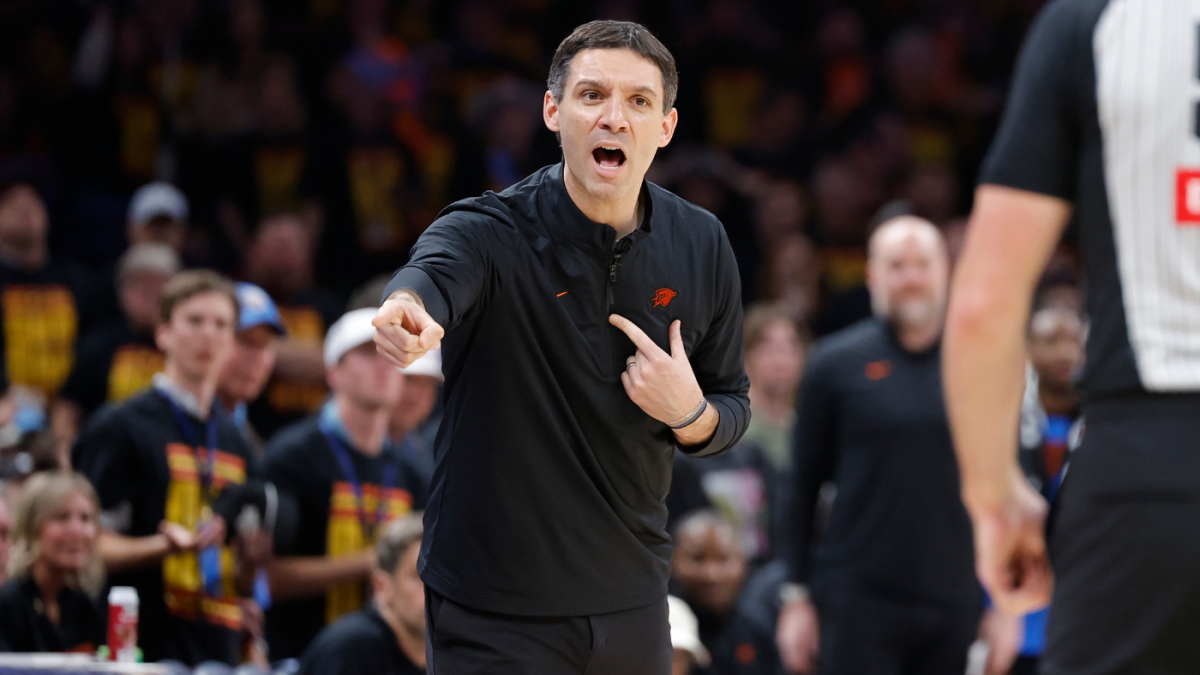The Thunder’s Controversial Strategy: A Deep Dive into Game 1 vs. the Nuggets
In the high-stakes arena of the NBA playoffs, every decision carries the weight of potential triumph or defeat. The Oklahoma City Thunder’s Game 1 against the Denver Nuggets epitomized this reality, as head coach Mark Daigneault’s late-game strategy unraveled spectacularly. The choice to employ the “foul up three” tactic not only cost the Thunder the game but also ignited a fierce debate about the efficacy of his coaching decisions. This analysis explores the nuances of the Thunder’s strategy, its execution, and the ensuing fallout.
The Strategy: Foul Up 3
The “foul up 3” strategy is a well-known tactic in basketball where a team intentionally fouls an opposing player to prevent them from attempting a three-pointer. This approach aims to send the fouled player to the free-throw line, where the likelihood of scoring is generally lower than from a three-point shot. However, this strategy is fraught with risks, particularly in high-pressure playoff scenarios.
The Execution
In Game 1, with the Thunder leading by three points and just 11.1 seconds remaining, Daigneault opted for the foul-up-3 strategy. The Nuggets were inbounding the ball from under their own basket, and their star player was on the bench. The Thunder’s defense, renowned as the best in the league, appeared poised to hold off the Nuggets. However, the execution of the foul-up-3 strategy was flawed.
The Thunder fouled too early, providing the Nuggets with multiple scoring opportunities. The first foul sent Jamal Murray to the free-throw line, where he made one of two shots. The second foul, committed almost immediately after, sent Michael Porter Jr. to the line, where he also made one of two shots. This sequence allowed the Nuggets to tie the game, setting the stage for the final, decisive play.
The Fallout
The Thunder’s strategy backfired dramatically. The Nuggets, buoyed by newfound momentum, executed a flawless inbound play that resulted in a game-winning shot. The Thunder’s fans and players were left in shock, and the coaching decision was immediately scrutinized. Social media erupted with criticism, and Daigneault faced unprecedented backlash.
Daigneault’s Defense
Despite the criticism, Daigneault stood by his decision. He argued that the strategy itself is not inherently flawed and that coaches at all levels often use it to prevent game-tying or winning shots. He maintained that the execution was flawed but that the strategy was sound. Daigneault’s defense of his decision underscored the complexity of coaching in high-stakes situations.
The Debate
The Thunder’s strategy sparked a broader debate within the basketball community. Some analysts argued that the strategy was flawed from the start, noting that the Nuggets’ free-throw shooters were reliable. Others contended that the execution was the primary issue, suggesting that the Thunder should have waited longer before fouling.
The Role of Execution
Execution is a critical factor in any strategy, and the Thunder’s failure to execute the foul-up-3 strategy correctly was a significant contributor to their loss. The timing of the fouls was off, giving the Nuggets too many opportunities to score. Additionally, the Thunder’s defense, which had been stellar throughout the game, seemed to falter in the crucial moments.
The Impact on the Series
The loss in Game 1 had a profound impact on the series. The Thunder entered the playoffs with high hopes, boasting the league’s top-rated defense. However, the loss to the Nuggets raised questions about their ability to execute under pressure. The Thunder will need to regroup and reassess their strategies if they hope to bounce back in the series.
Learning from the Mistake
Every loss is an opportunity to learn, and the Thunder will need to learn from this mistake. Daigneault and his coaching staff will need to analyze the execution of the foul-up-3 strategy and consider alternative approaches for future games. The Thunder’s players will also need to reflect on their performance and focus on executing the game plan more effectively.
Conclusion: A Lesson in High-Stakes Decision-Making
The Thunder’s late-game strategy in Game 1 against the Nuggets serves as a stark reminder of the high-stakes nature of the NBA playoffs. Every decision, no matter how small, can have significant consequences. Daigneault’s decision to foul up three was a calculated risk that ultimately backfired. However, the true test of a coach’s ability is not in avoiding mistakes but in learning from them and adapting.
As the Thunder move forward in the series, they will need to draw on the lessons from Game 1. The team must focus on executing their strategies more effectively and maintaining their composure under pressure. The road to the playoffs is fraught with challenges, and the Thunder’s ability to learn and adapt will be crucial to their success. The Thunder’s journey in the 2025 NBA Playoffs is far from over, and their resilience and adaptability will be put to the test in the games to come.

